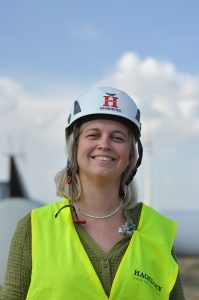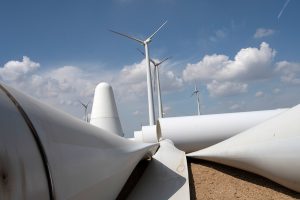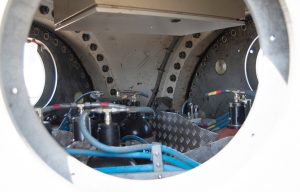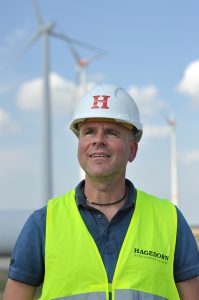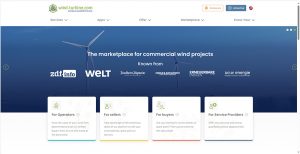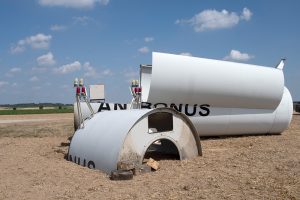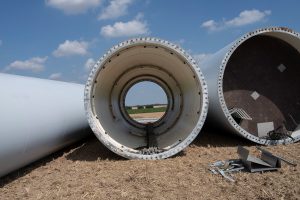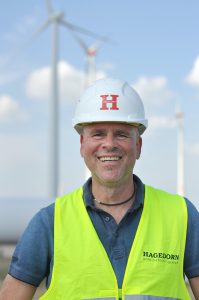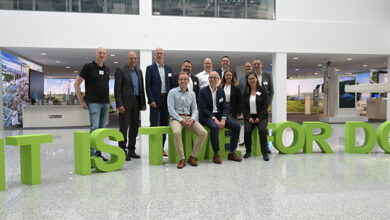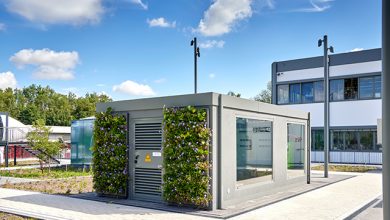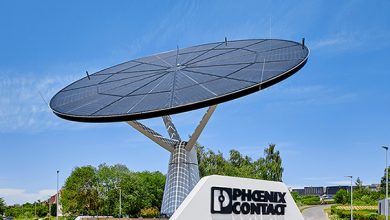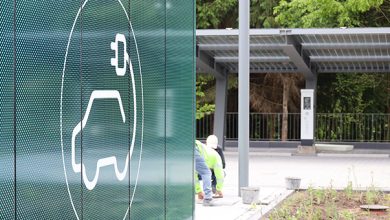What actually happens to old wind turbine generators when they are dismantled? While self-proclaimed experts with a healthy half-knowledge claim that countless tons of hazardous waste are produced here, we visit two experts at a dismantling site to investigate these legends.
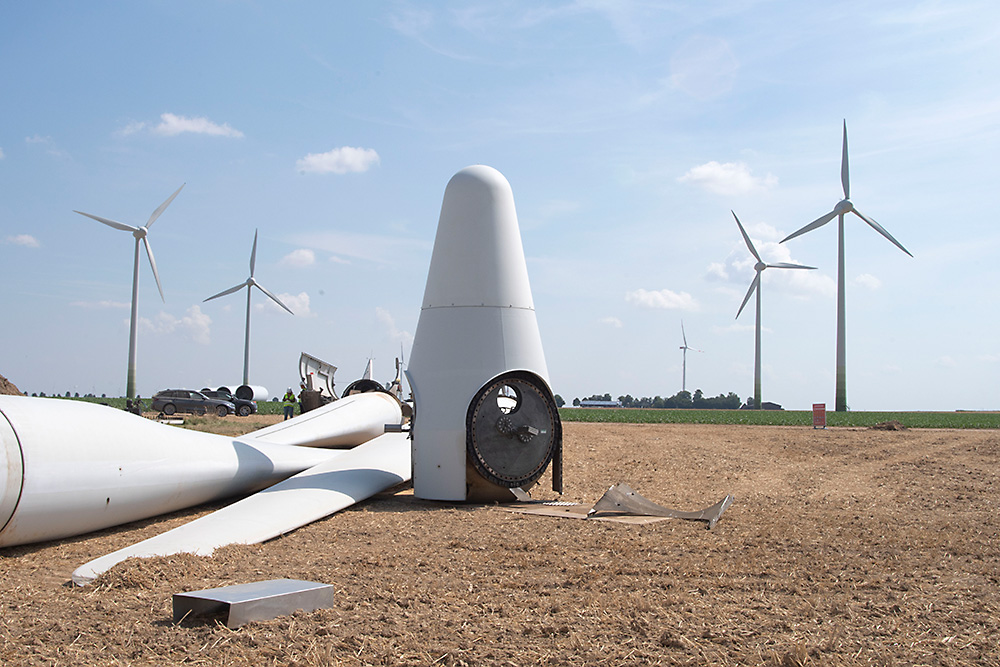
Meeting point wasteland: In Lövenich, near the large Rhenish lignite mining area, old turbines have to make way for new ones. Repowering is the order of the day. The energy service provider Engie has been operating eight AN BONUS/Siemens turbines with a total output of 10.4 MW here since 2001. Four of the old turbines with 1.3 MW each are being replaced by two new turbines with 5 MW each. We have an appointment with Mareike Brinkmeyer and Bernd Weidmann. Both of them are experts in the recycling of disused windmills.
Gentle destroyers
Mareike Brinkmeyer is a sales employee at Hagedorn Service GmbH. The East Westphalian company is headquartered in Gütersloh and is passionate about destroying what others have built up over the years. Their quotations range from demolition and contaminated site remediation to disposal, civil engineering and the reconditioning of the cleared area.
“Here in Lövenich, we were initially commissioned to professionally dismantle four old wind turbine generators,” explains the trained urban planner, who has been employed by Hagedorn since 2020. “At Hagedorn, we specialize in the dismantling of wind turbine generators, among other things, but we also dismantle large-scale facilities such as power stations or factories. However, we are receiving more and more orders in the wind energy sector.”
Brinkmeyer describes how the windmill is dismantled: “First, we use a heavy-duty crane to remove the blades. Individually, the blades easily weigh four and a half tons – that requires sensitivity. Then we dismantle the nacelle and the hub. The nacelle alone weighs 50 tons on the crane. Then we remove the tower piece by piece. Here it consists of three steel segments. If it were concrete, our own blasting team would blow it up in a controlled manner. Or we use a cable excavator and wrecking ball and go about the work conventionally. It always depends on the situation on site, the space, other installations, pipes or buildings within reach. The dismantled systems are then recycled.”
Most of the plants that Hagedorn is currently dismantling have fallen out of the German Renewable Energy Sources Act (EEG) funding program and are 25 years old and older. “Then it’s not worth continuing to operate them, even though the plants could often run for decades. What is resold is what is in demand on the market. Nacelles are often sold in one piece, but towers can also be rebuilt in a different location if technically possible.”
Resuscitators
Bernd Weidmann knows how to launch a career. The 55-year-old was not only a passionate footballer. The trained industrial clerk calls himself a platform economist. And he knows what he’s talking about, because before he discovered the windmill market for himself, he set up the most successful horse sales exchange in Europe at the time (pferde.de). And, almost incidentally, he also gave his home town access to the Internet with the local site main-kinzig-kreis.com at the end of the 1990s.
How did he get into renewable energy? “In 2011, I really wanted to establish a b2b platform. Fukushima, the energy revolution, the climate crisis – I wanted to build the largest platform for used wind turbine generators in the world.” He secured the domain wind-turbine.com for a hefty $9,000 and began to build up contacts in the industry. And an opportunity for used turbines to change hands: “The first turbine was an Enercon E17. A local farmer called me and said he had an old Enercon that he needed to get rid of. He would also give it away or donate it to a museum. I then told him that we would try selling it. The farmer first sent me the Polaroid pictures by post, then I posted the turbine myself. And sure enough, there was another operator just 50 kilometers away who also had this ancient turbine in operation. And one of his generators broke down. He then drove over with his tractor and picked up the system. And bang, I had made two farmers happy.”
Still running
Nevertheless, it still took some time for Weidmann to establish himself in the scene. “I’m primarily a businessman, not one of those wind pioneers with my own windmill in the front garden. But the breakthrough came in 2015. At the Messe Husum Wind, I was approached by the first well-known companies.” Then things took off. In 2016, Weidmann took over the then market leader from the Netherlands and thus became the international leader in the market for used wind turbine generators.
“We don’t sell ourselves, but broker the sales, similar to mobile.de, for example. 60 to 70 percent of all sales are quoted by brokers. And more than 90 percent of buyers are active abroad, with a large proportion from Eastern Europe.” While walking through the old wind turbines, Bernd Weidmann explains that there are also visitors from more than 190 countries worldwide on his platform. “Eastern Europe has an advantage due to its geographical proximity when it comes to used turbines from Germany. But there are now also mills in North Africa and South America.” The buyers come from a wide range of industries, from a hotel group from Nigeria to small energy companies from Peru. “With dismantling, transportation and installation, you’re also looking at 200,000 to 500,000 euros, but not five million. And if the systems are well maintained, they can easily last another 10 to 15 years, maybe even longer.”
Market with potential
No more “expensive hazardous waste” – the two experts squint into the sun. The market will continue to grow in the future, as many systems from the subsidy programs are now in operation. And at the same time, new operators are jumping on board. “In 2020 alone, we sent quotations to more than 280 customers,” reports Mareike Brinkmeyer. And Bernd Weidmann outlines the bigger picture: “We orchestrate the international market via our platform and establish contacts between buyers and sellers as a trustworthy authority. Our motivation is to accelerate the energy revolution globally with the help of digitization – ideally with German technology and our expertise.”
